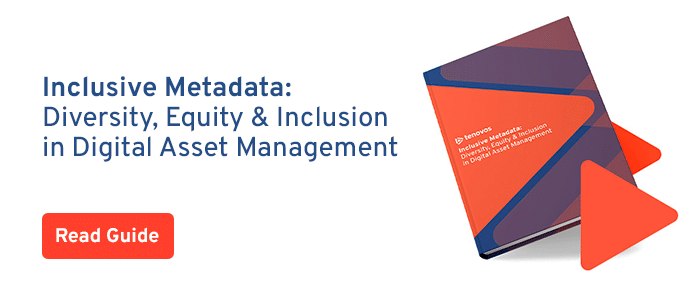Assets that don’t work to tell a story, often don’t work at all. But when creative teams are building assets and campaigns, how are they supposed to know which stories will resonate with their audience the most?
At Tenovos, we’re always thinking about how stories are built and contextualized. Let’s take a look at how stories move from idea to execution in the marketing world — and how storytelling strategy is important in every phase, to every role, and in every tool.
Strategy #1: Use Data to Ensure Relevance
Before you can tell an effective, impactful story, you need to understand its audience. Typically, in enterprise organizations, this insights function is handled by strategists using research tools to understand which demographic and cultural trends can be leveraged to capture attention and drive engagement.
Research tools available at this phase of content ideation tend to be market-oriented, with only scant insight into how previous campaigns and assets fared or which stories resonated with potential customers. While researchers pass recommendations on to creative teams, this research often offers little visibility into the why of each recommendation, leaving designers and copywriters struggling to understand which parts are important — and which are coincidental.
Getting it right at the research phase means keeping a laser focus on relevance. The more data you can examine from previous campaigns to see which stories resonated with buyers, the better you can plan a new campaign that engages and delights its audience.
Strategy #2: Put Content in Context
Traditional digital asset management (DAM) tools often come into the picture during the next phase, when designers and producers start to create assets using strategic recommendations.
At a typical enterprise organization these days, the teams putting together assets may be living in different time zones, working on campaigns in different languages, using dozens of different tools.
With limited visibility into the work being done by other teams, creatives are by default limited to the recommendations that come from a small slice of the overall organization.
The more context that an organization can deliver to creative teams — in the form of automated content recommendations, insights into similar campaigns, and value prediction — the better decisions those individuals can make.
Strategy #3: Be Agile and Make Real-Time Changes
As assets are deployed for a particular use (ad campaigns, social media posts, ecommerce websites, etc.), their performance in context can be measured if the right tools are in place. But for many companies, this kind of measurement happens only after, for example, a campaign has already wrapped up and spent its budget.
Realistically, this results in a lot of wasted money. Not every tactic in a major omnichannel initiative is going to succeed, and underperforming assets — perhaps those that tell a story that just doesn’t resonate — are unlikely to suddenly pick up steam after a tepid start.
Companies need real-time analytics and predictive value measurement to understand which campaigns are delivering better returns than expected, and which ones haven’t been able to gain traction.
By re-allocating campaign spend in a data-driven, agile way, organizations can get the most from their storytelling dollar while minimizing brand dilution from stories that don’t perform well.
Strategy #4: Enhance Your Perception
Once an asset is ready to retire — whether its campaign has ended, or it’s time for a website refresh, or a social post has run its course — what happens to it? At many organizations, the answer is that the asset is put into cold storage, never to be seen or used again.
That’s because most legacy tools restrict users to finding information they’re specifically looking for, taking serendipity and intuition out of the mix. To find that one amazing asset resonated so well in a campaign three years ago, someone has to remember it and go searching.
To make assets valuable beyond their initial deployment, companies need to power their search with predictive analytics. Aided by machine learning algorithms, predictive analytics can draw connections between old assets and new strategies, validating and improving storytelling options by surfacing content automatically that the searcher might never have thought of or know to look for.
Get Strategic About Storytelling
At Tenovos, we take storytelling seriously — at every stage of the storytelling life cycle. With the Tenovos platform, your teams can contextualize and collaborate more effectively to create stories that matter, using next-generation tools that create a strategic advantage when your content is competing for attention and engagement in the digital world.
Ready to learn more about enriching your storytelling capabilities with the newest cloud-native technologies? Read our white paper or contact us for more information.



